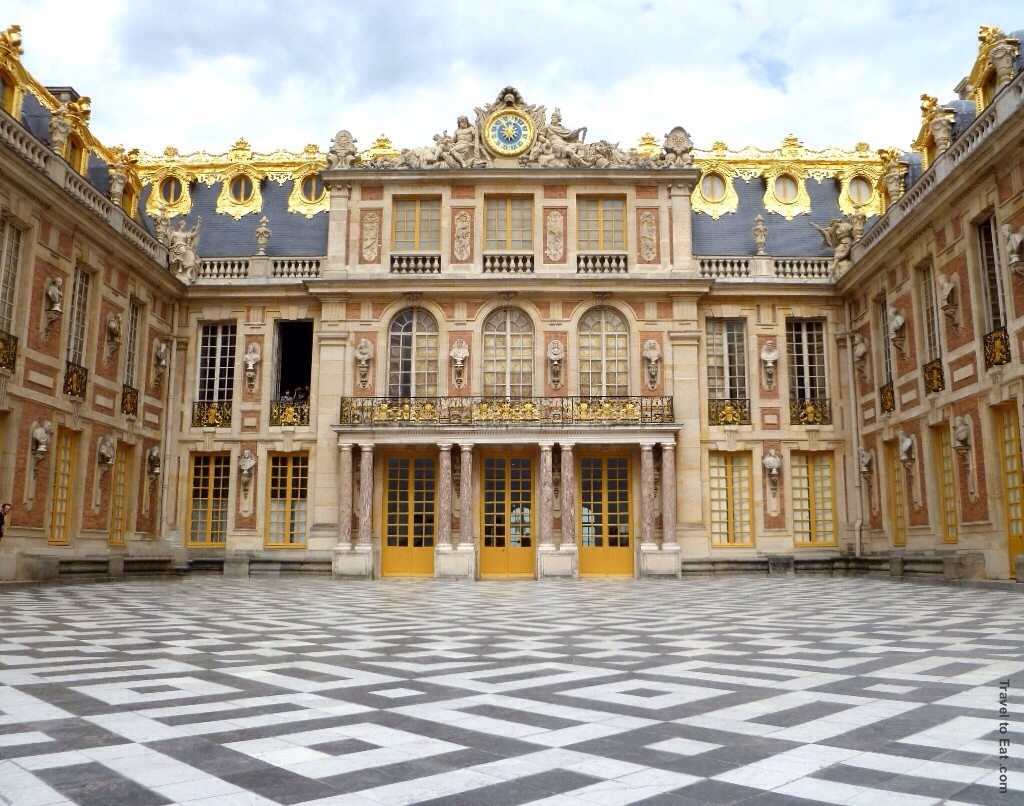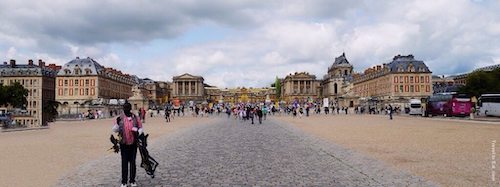
Versailles started out as a hunting lodge for King Louis XIII. When Louis XIII was younger, he had accompanied his father King Henry IV on hunting trips to the estate of Albert de Gondi, a French general originally from Florence. At this time, Versailles was a fair distance from Paris, heavily forested, with only about 500 people living around an old castle. In 1622 Louis XIII bought land for his private hunting reserve and in 1624 bought more land to build a small hunting lodge on top of a hill. In 1634 he bought the rest of the land and gradually enlarged the building to a small chateau by 1635.
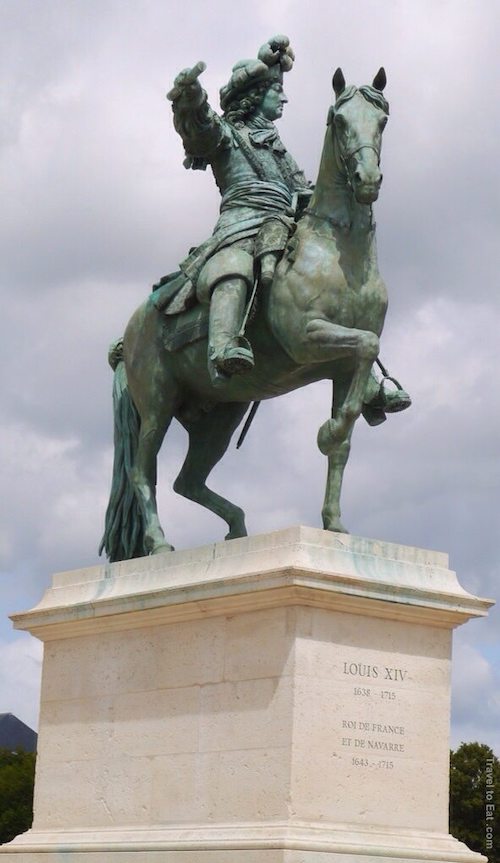
This great equestrian statue of Louis XIV stands outside all the gates of Versailles, looking out on the town he created, reminiscent of the equestrian statue of Henry IV on the Pont Neuf. To understand why Louis XIV is here, you need to understand a little history. His grandfather, King Henry IV, was previously King Henry III of Navarre. Throughout most of the 16th century the growing number of Protestants in the south of France had led to wars and civil infighting with the majority Catholics known as “The French Wars of Religion”. When the Henry IV became king, the kingdoms of Navarre and France were joined, hence the inscription on the statue for Louis XIV. However, he was a Protestant and a civil war ensued, ending only when Henry IV (now of France) converted to Catholicism. He was said to have declared that “Paris vaut bien une messe” (“Paris is well worth a Mass”). Henry IV stopped the wars in 1598 with a peace treaty, the “Edict of Nantes”. However, he was assassinated by a fanatical Catholic in Paris when Louis XIII was only seven.
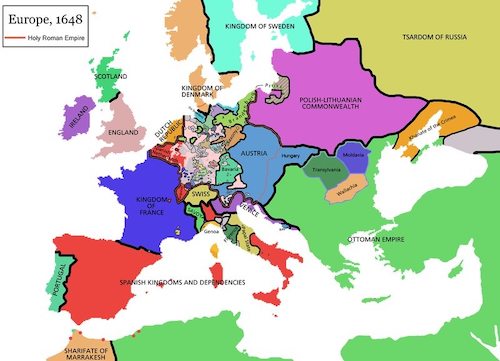
The same friction between Protestants and Catholics spread to all of Europe in the first half of the 17th century, known as the “Thirty Years War”. Louis XIII spent his time fighting the war and consolidating the power of the king with the help of Cardinall Richileau, the first modern prime minister. Richelieu's tenure was a crucial period of reform for France. Earlier, the nation's political structure was largely feudal, with powerful nobles and a wide variety of laws in different regions. Parts of the nobility periodically conspired against the King, raised private armies, and allied themselves with foreign powers. This system gave way to centralized power under Louis XIII and Richelieu. Louis XIII died when Louis XIV was only five. Richelieu's policies were continued and expanded by Cardinal Mazarin who concluded a peace treaty to the war, “Peace of Westphalia” in 1648, making France the most powerful nation in Europe. In the same year there was a popular uprising in Paris, the “Fronde”, against taxes imposed by Mazarin. They actually broke into the palace and into the young king's bed chambers, leaving because he was feigning sleep. This insurrection was stopped only by the king attaining his majority rule.
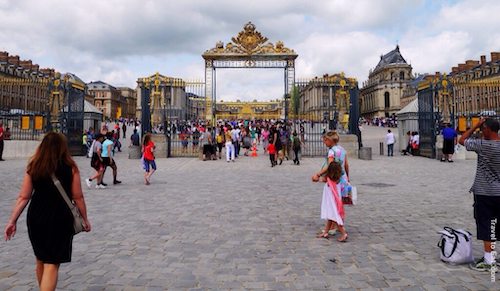
As you get a little closer, you realize there are two fences, each with its own set of gates. Both entrance gates with Royal Arms in gilded wrought iron were designed by Jules Hardouin-Mansart. When King Louis XIV came of age, he made two decisions which led to making Versailles the de facto capital of France. First he fired Nicolas Fouquet, his superintendent of finances, and confiscated the recently built Vaux-le-Vicomte, an extravagant château built for Fouquet. He then employed Le Vau, Le Nôtre, and Le Brun, who all had worked on Fouquet’s grand château Vaux-le-Vicomte, for his building campaigns at Versailles and elsewhere. Louis Le Vau as an architect, Charles Le Brun as a painter and decorator, and Andre Le Notre as the landscape architect. In 1676 another architect, Jules Hardouin-Mansart, was put in charge of redesigning and enlarging the palace. Starting with Le Vau's plans, Hardouin-Mansart added a second story and built the magnificent Hall of Mirrors and the north and south wings.
When Louis XIV began his rule, France was tired of war and particularly war among the nobility. His solution was to move the seat of government away from the mobs of Paris, to the relative safety of Versailles. He then required the nobility to move with him, enticing them with free land in the new carefully planned city. The nobles were required to spend time at court, where Louis XIV watched and rewarded “good” behavior. Finally he revoked the Edict of Nantes in 1685, prompting many of the troublesome Protestants to leave France. Over the course of four building campaigns, Louis converted a hunting lodge built by Louis XIII into the spectacular Palace of Versailles, which was followed by an official move of the royal court to Versailles on 6 May 1682.
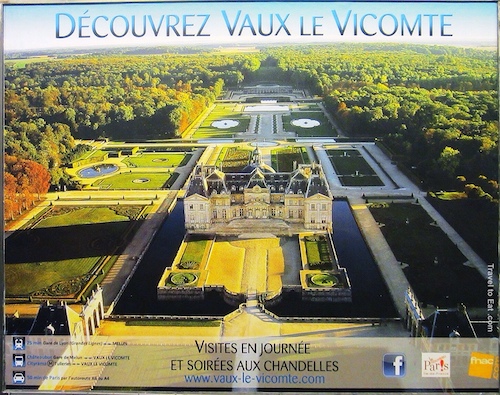
Vaux-le-Vicomte is the subject of an advertising campaign, mainly in the subway by the French government, which as you can see from the poster shown above is another beautiful place to visit.
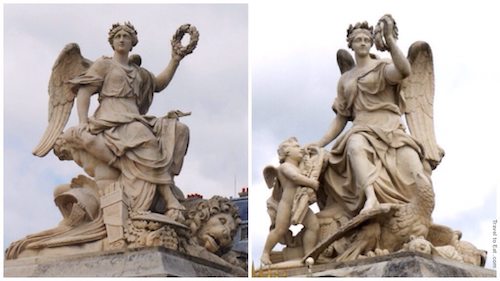
Two lovely angel statues flank this first gate on top of the guard posts. I was unable to find out who the artist was, but the condition of the marble shows that they have been well treated.
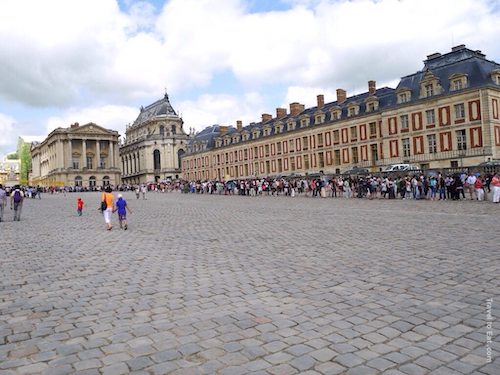
Once you enter the main gate, you will be in a large courtyard, the Ministers Courtyard, named because of the two long ministerial buildings on each side. The long line of people on the right is the line waiting to enter the chateau. If you just want to visit the gardens, you do not need to wait in this line, go to the far left and enter the gardens for free. The building behind the line is an administrative building, for government offices. The part of the chateau open to the public is actually only a small part of the chateau. The building in the center is the Versailles chapel, which you will able to see inside.
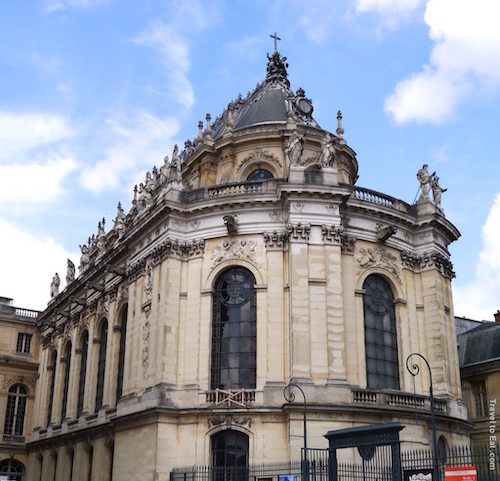
The chapel was one of the last building projects completed by Louis XIV at Versailles. The present chapel of the Palace of Versailles is the fifth in the history of the palace. These chapels evolved with the expansion of the château and formed the focal point of the daily life of the court. Begun in 1689, construction was halted due to the War of the League of Augsburg; Jules Hardouin-Mansart resumed construction in 1699. Hardouin-Mansart continued working on the project until his death in 1708, at which time his brother-in-law, Robert de Cotte, finished the project. Dedicated to Saint Louis, patron saint of the Bourbons, the chapel was consecrated in 1710.
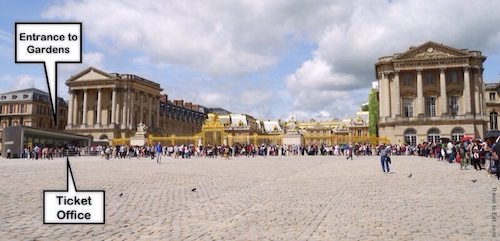
As I said above, you can always enter the gardens of Versialles (for free) and spend hours enjoying the gardens, fountains and sculptures. The line shown above starts around the ticket office, snakes all the way down and back. This is the situation most mornings in the summer. Instead, consider going to the gardens in the mornings and go to the chateau in the late afternoon, when there is almost no line.
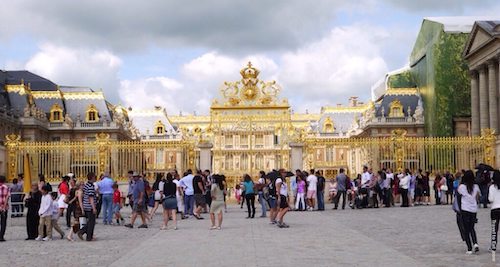
The inner fence and gate are completely covered in gold, which along with the gold trim on the building makes for a pretty awsome sight.
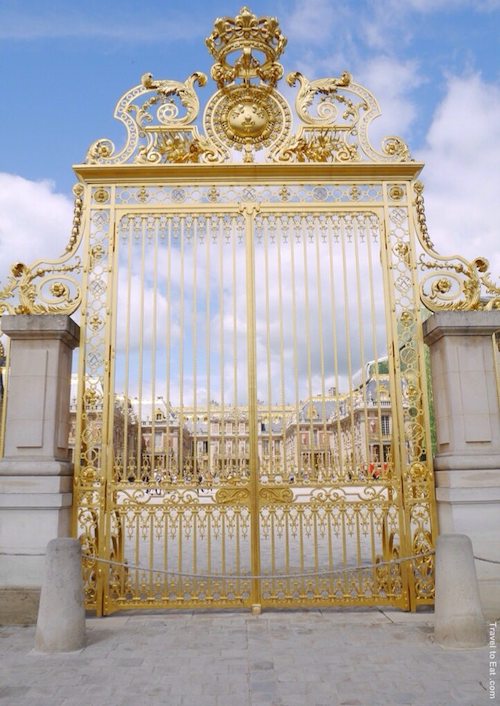
The detail on the gate is amazing, you can imagine the impact when this gate was opened by coachmen, allowing entry to Versailles.
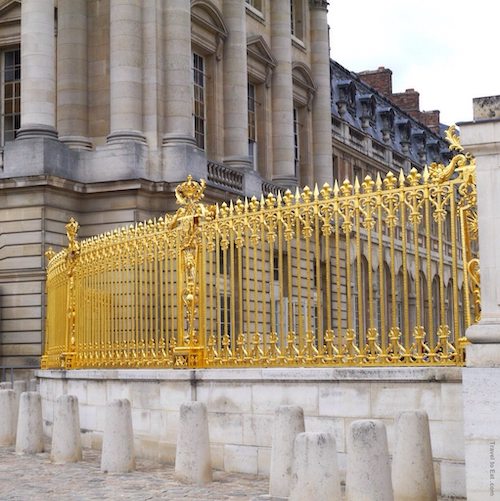
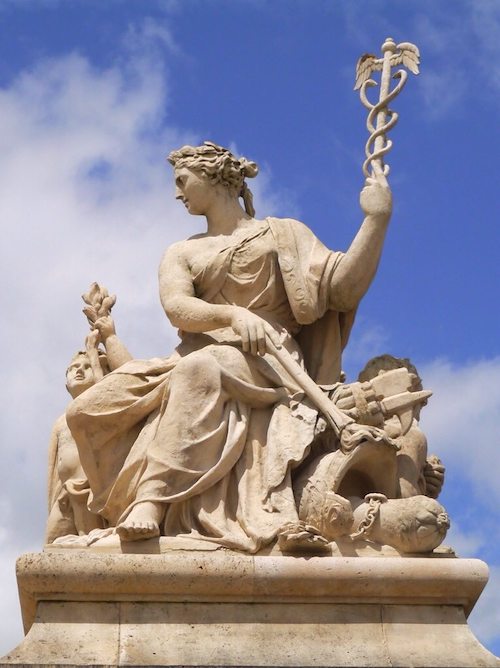
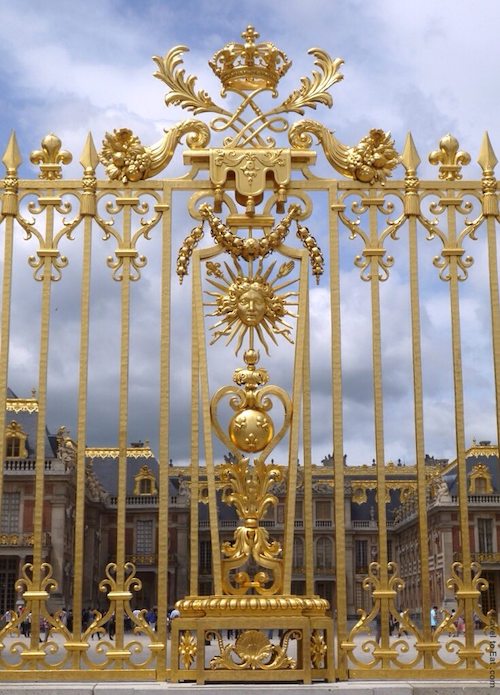
The gold leaf was meant to emphasize the “sun king” motif of Louis XIV reign, as was the sun interwoven into the artistic details of the fence.
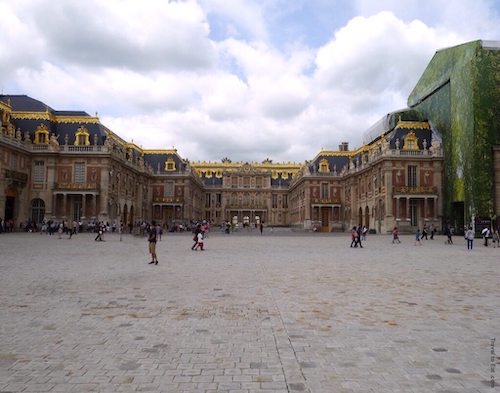
This is the inner Royal Courtyard of Versailles. Here you begin to appreciate the amount of gold on the buildings. As part of the free land grant in Versailles, the roofs of the buildings and houses of the new city were not to exceed the level of the Marble Courtyard at the entrance of Versailles so that the perspective from the windows of the palace would not be obstructed.
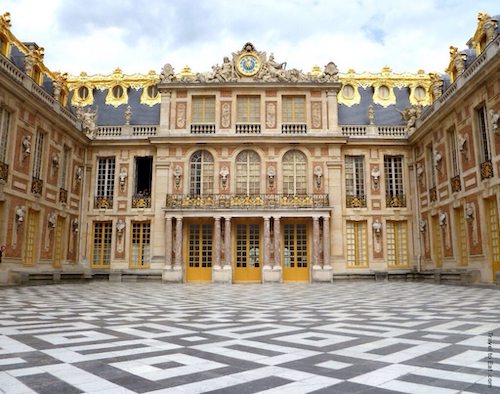
Finally this is the inner Marble Courtyard of the Palace of Versailles. The Marble Courtyard is the same size as the courtyard of Louis XIII’s original little chateau. The balcony in the center leads into the King’s bedchamber. The clock on the pediment was set to the hour of the preceding King’s death for Louis XIV in 1715 and Louis XV in 1774.
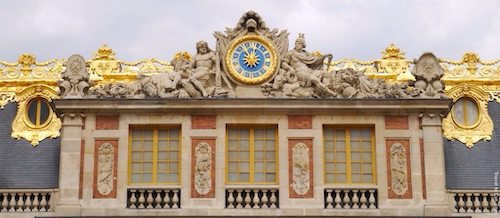
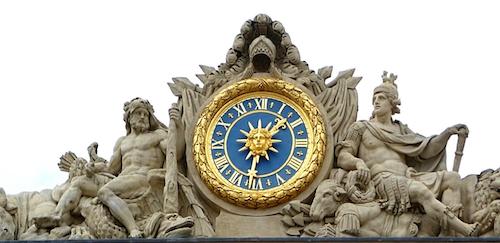
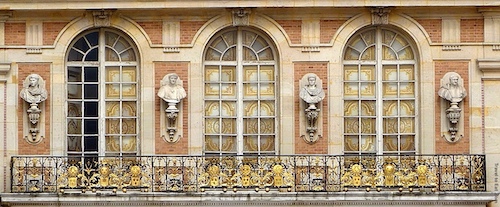
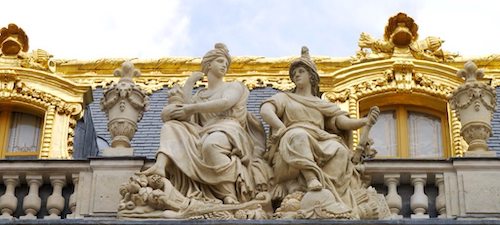
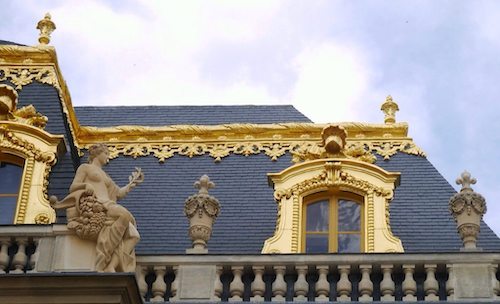
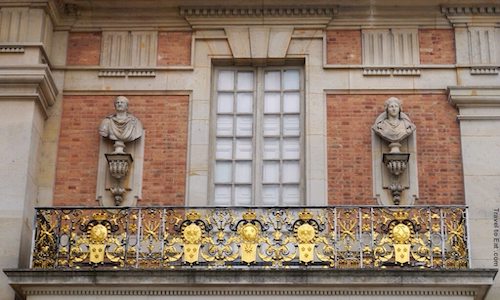
I will close here, but future posts will focus on the interior of the Palace, the gardens, the fountains and the Grand and Petite Trianon.

